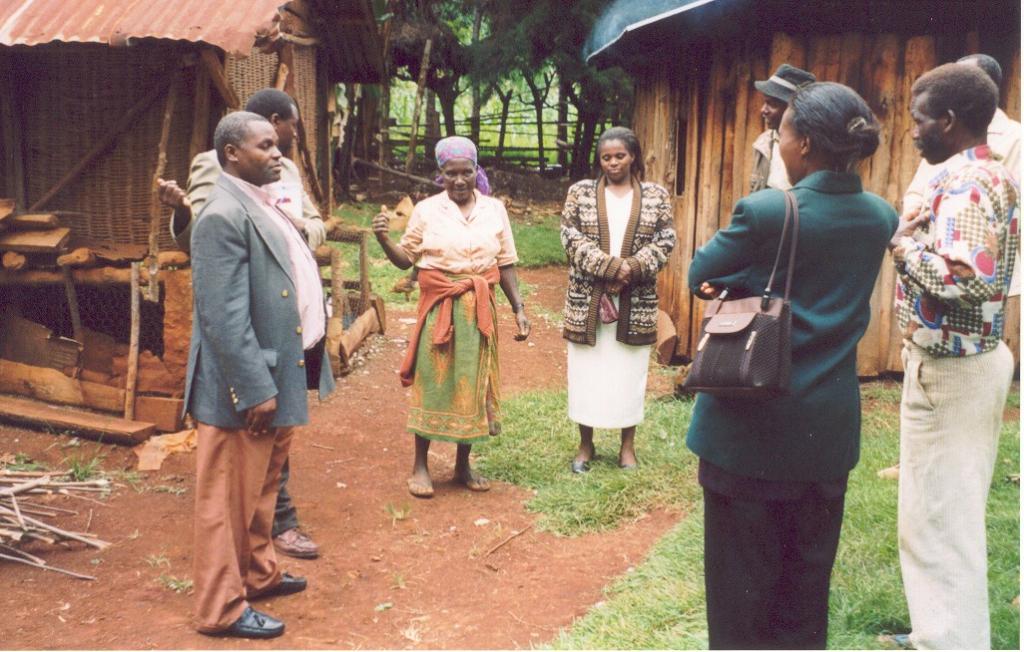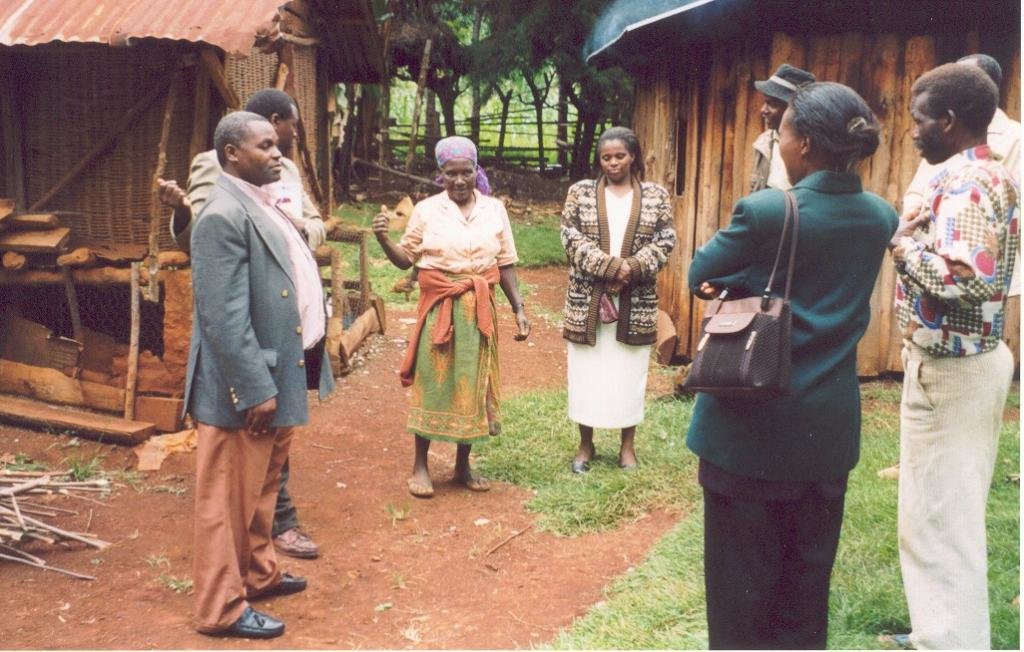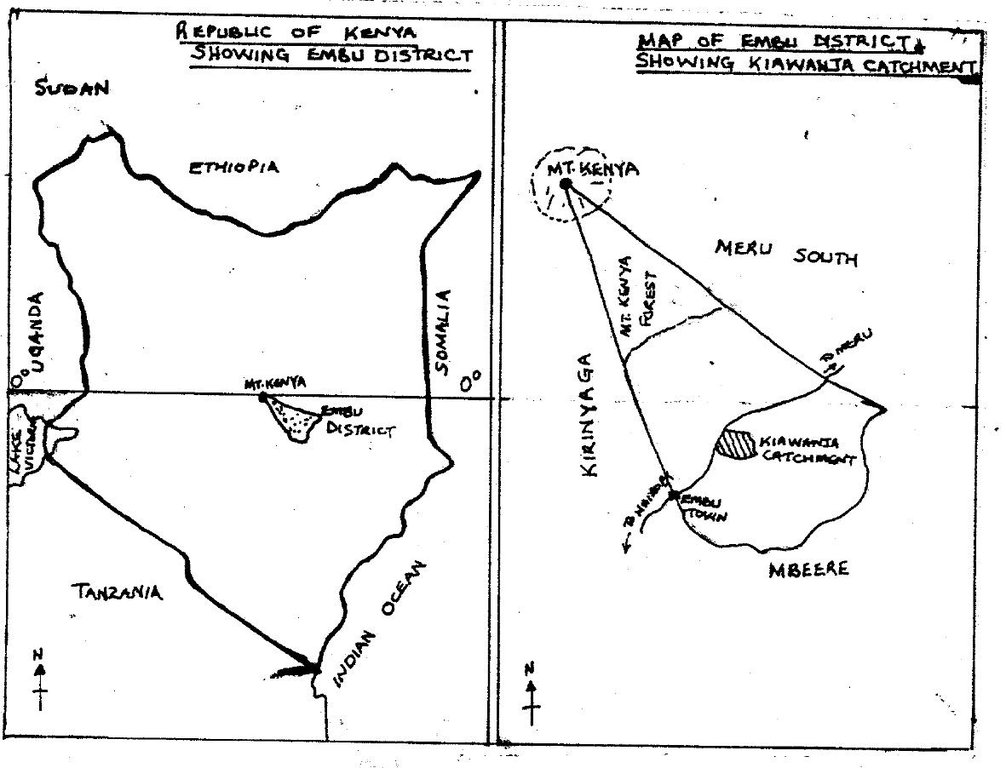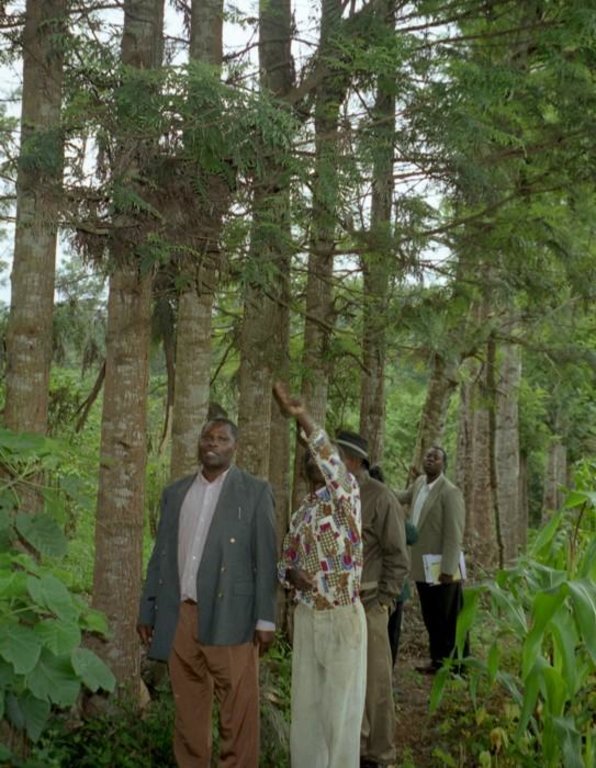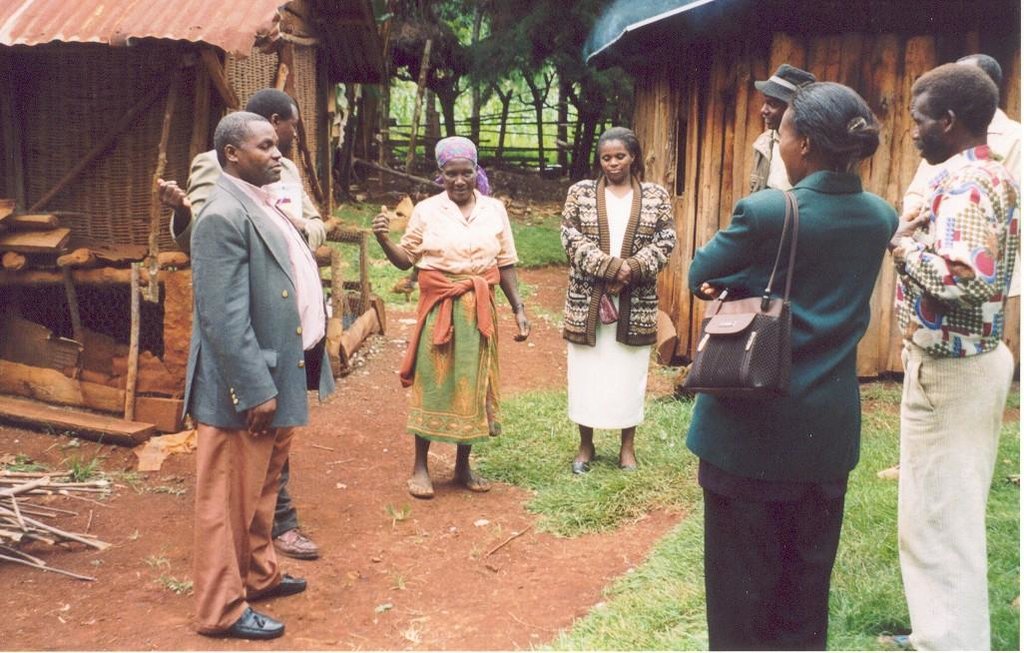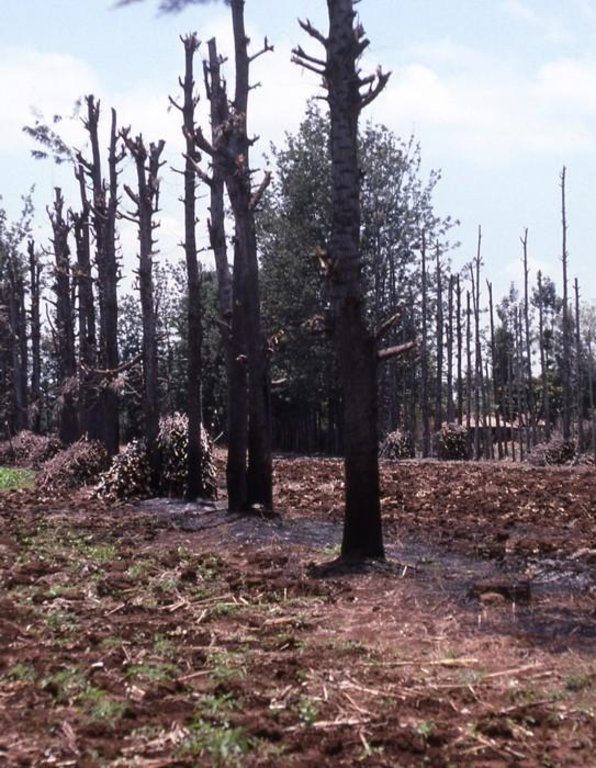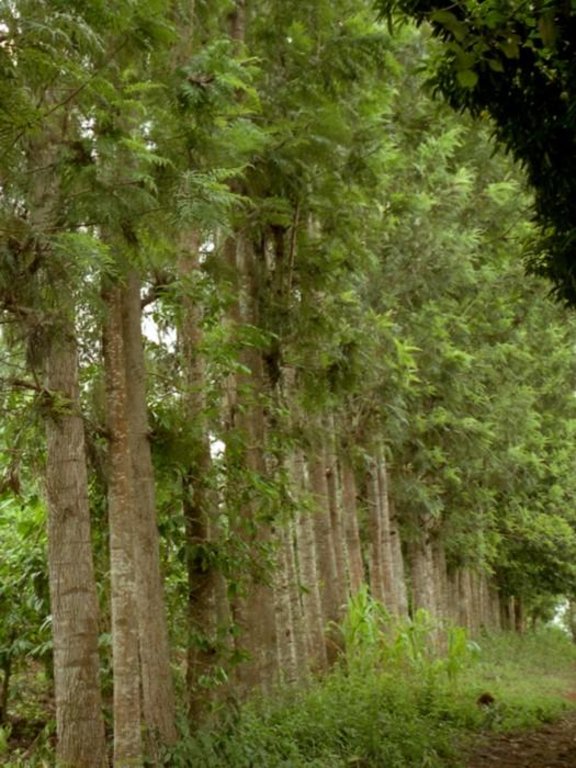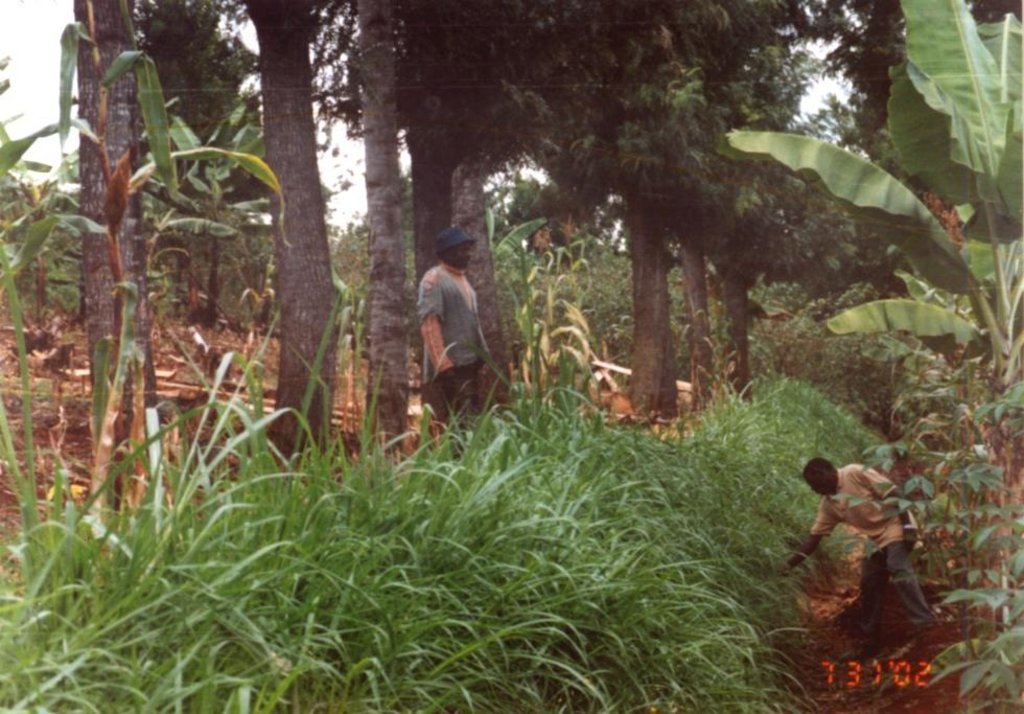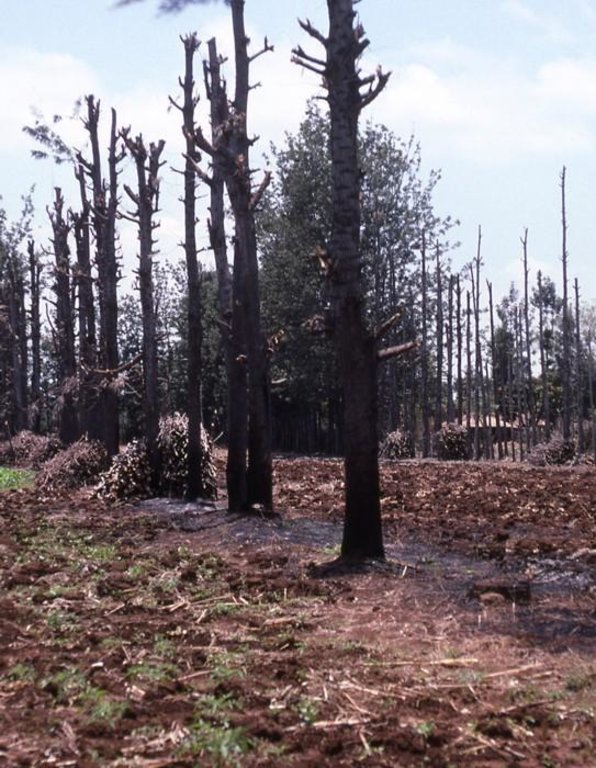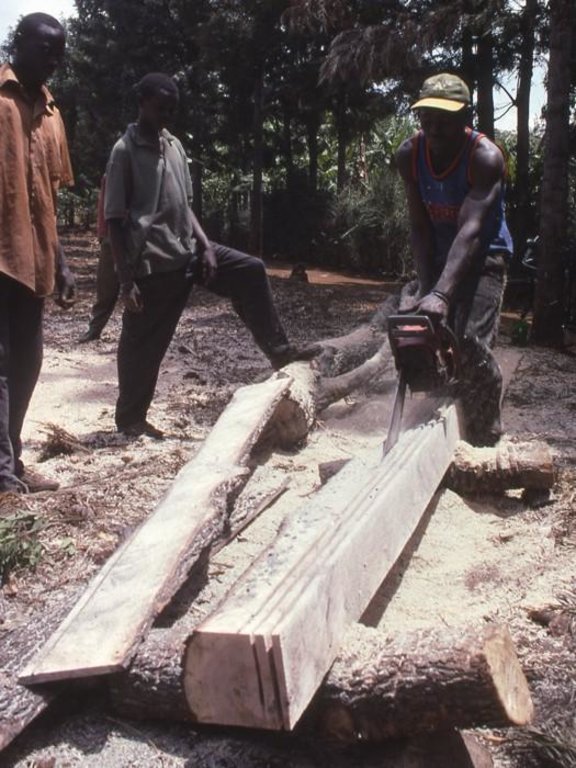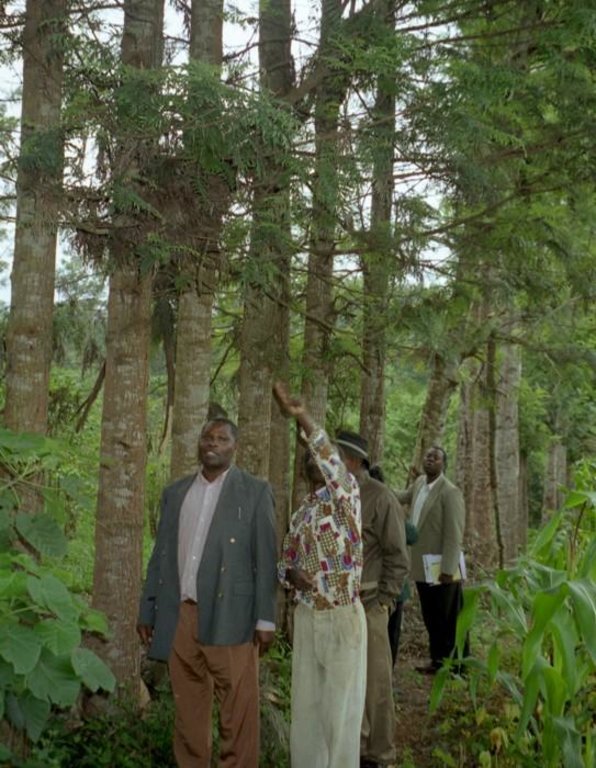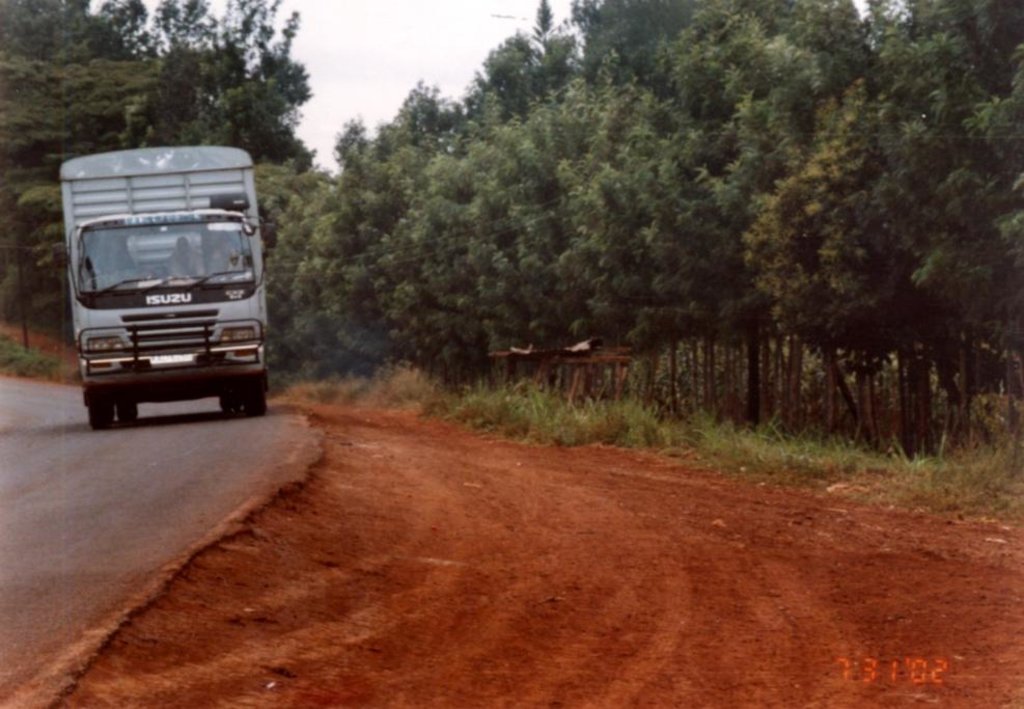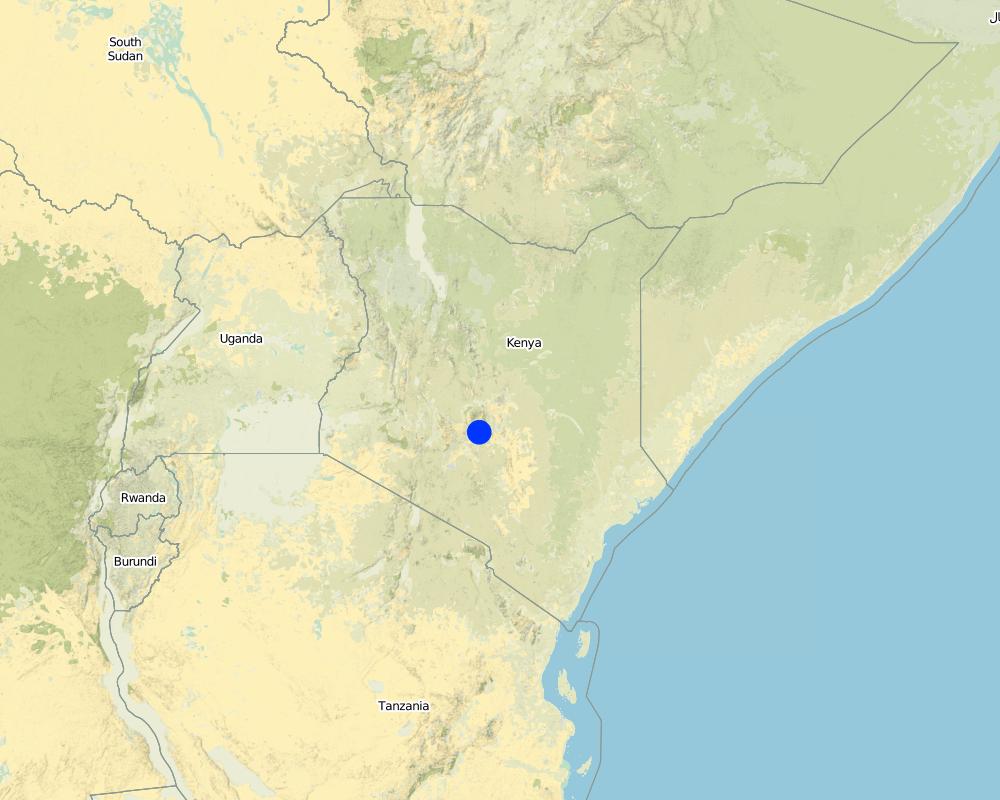Spontaneous spread [肯尼亚]
- 创建:
- 更新:
- 编制者: Ceris A. Jones
- 编辑者: –
- 审查者: Fabian Ottiger
approaches_2627 - 肯尼亚
查看章节
全部展开 全部收起1. 一般信息
1.2 参与方法评估和文件编制的资源人员和机构的联系方式
SLM专业人员:
Mwaniki JM
mwanikijm2002@yahoo.com
Ministry of Agriculture/Soil and Water Conservation Branch
Embu
肯尼亚
SLM专业人员:
有助于对方法进行记录/评估的机构名称(如相关)
Ministry of Agriculture and Livestock Development of Kenya (MoA) - 肯尼亚有助于对方法进行记录/评估的机构名称(如相关)
Swiss Agency for Development and Cooperation (DEZA / COSUDE / DDC / SDC) - 瑞士有助于对方法进行记录/评估的机构名称(如相关)
Agronomica - 英国1.3 关于使用通过WOCAT记录的数据的条件
编制者和关键资源人员接受有关使用通过WOCAT记录数据的条件。:
是
1.4 SLM技术问卷的参考
2. SLM方法的描述
2.1 该方法的简要说明
Spontaneous land users' initiative to meet household needs - especially firewood and timber - through planting Grevillea robusta trees as part of an agroforestry system.
2.2 该方法的详细说明
该方法的详细说明:
Aims / objectives: Grevillea robusta is a well-known shade tree, used in coffee and tea plantations in East Africa since the early part of the 20th century. While it originates from Australia, it was brought over from India and Sri Lanka by European settlers. Smallholder farmers in the highlands of Kenya noted that there was little or no competition between grevillea and neighbouring crops. Indeed this is one of the reasons it was so successful as a shade tree amongst plantation crops. Responding to the local lack of timber and firewood, due to the expansion of farmland into previously forested areas, smallholders took to planting grevillea, especially as a boundary tree, from the 1970s onwards. While the immediate effect of grevillea planting was to satisfy those needs for wood, the tree also helps in various ways to conserve land and improve the soil. This too was probably a reason for its spontaneous spread.
Methods: Because planting of grevillea requires few resources other than tools, even poor land users can readily adopt the technology. Although seedlings can be bought from local Government, NGO or private nurseries, it is also possible to collect ‘wildings’ (naturally generated seedlings) and plant these at minimal cost. The management of grevillea trees, once established, is important to their performance in the field, but the skills of thinning, and pollarding (pruning side branches for use) can be easily learned from neighbours. The success of the spontaneous spread of grevillea, basically through farmer-to-farmer exchange of knowledge, demonstrates that tree planting is not something that has always to be ‘pushed’ by outside agencies. Where smallholders perceive a need for trees and tree products - and an appropriate species is available - they will respond positively. However there is still an important ‘pulling’ role to be played by the Ministry of Agriculture’s extension agents and NGOs, especially through support for tree nurseries and for training to establish private tree nurseries.
2.3 该方法的照片
2.5 采用该方法的国家/地区/地点
国家:
肯尼亚
区域/州/省:
Eastern Province
Map
×2.6 该方法的开始和终止日期
注明开始年份:
1971
2.7 方法的类型
- 传统/本土
2.8 该方法的主要目的/目标
The Approach focused mainly on other activities than SLM (Fencing, farm boundary marking, ornamental value, fuel wood supply, building materials provision)
- improve availability of tree products (fuelwood and wood for construction). - demarcate own land easily and cheaply (after land registration). - reduce land degradation. - increase land productivity. - improve household income
The SLM Approach addressed the following problems: - shortage of fuelwood and building materials, environmental degradation. - need for farm boundary marking. - lack of simple, widely applicable agroforestry recommendations
2.9 推动或妨碍实施本办法所适用的技术的条件
社会/文化/宗教规范和价值观
- 阻碍
Gender bias - women not expected to plant trees
Treatment through the SLM Approach: Although not directly related to this approach, intensive campaigns were conducted (by government and NGO's) to encourage gender balance with respect to tree planting
财务资源和服务的可用性/可得性
- 阻碍
Shortage of tree seedlings and sourced from long distance
Treatment through the SLM Approach: Setting up of individual on-farm tree nurseries and collection of wildlings
法律框架(土地使用权、土地和水使用权)
- 启动
The existing land ownership, land use rights / water rights greatly helped the approach implementation: Private land ownership has given farmers confidence to invest the land, and has also been a direct stimulus through the need to mark plot boundaries
了解SLM,获得技术支持
- 阻碍
Shortage of tree seedlings and sourced from long distance
Treatment through the SLM Approach: Setting up of individual on-farm tree nurseries and collection of wildlings.
3. 相关利益相关者的参与和角色
3.1 该方法涉及的利益相关者及其职责
- 当地土地使用者/当地社区
Working land users were mainly men (It was traditionally the role of men to plant trees. This is however changing ie other groups - women and youth - are now planting trees.)
Land users identified, purchased and planted their species of choice. However, at the same time, Grevillea seedlings were available at institutional (Ministry of Environment and Natural Resources) nurseries.
Traditionally men purchased, collected and planted trees. The men had greater access to and control of decisions on planting. The technology requires few resources, so that even poor land users have easily been able to decide to buy seedlings or collect wildlings and plant
3.2 当地土地使用者/当地社区参与该方法的不同阶段
| 当地土地使用者/当地社区的参与 | 指定参与人员并描述活动 | |
|---|---|---|
| 启动/动机 | 自我动员 | innovative individuals planting grevillea |
| 计划 | 自我动员 | informal, individual plans |
| 实施 | 自我动员 | |
| 监测/评估 | 被动 | ad hoc observations by MoA; |
| Research | 无 | no activities |
3.4 有关SLM技术选择的决策
具体说明谁有权决定选择要实施的技术:
- 仅限土地使用者(自主)
解释:
Land user-driven initiative by shortages/problems
Decisions on the method of implementing the SLM Technology were made by by land users* alone (self-initiative / bottom-up). The land user decided on when and how to plant the trees.
4. 技术支持、能力建设和知识管理
4.1 能力建设/培训
是否为土地使用者/其他利益相关者提供培训?:
是
涵盖的主题:
Some demonstrations of benefits of tree planting by Government at provincial agricultural shows.
4.2 咨询服务
土地使用者有权使用咨询服务吗?:
是
指明是否提供了咨询服务:
- 在土地使用者的土地上
说明/注释:
Key elements: Informal farmer-to-farmer exchange of ideas and skills. Additionally, on national tree planting days, the government hands out seedlings. Grevillea planting has been encouraged during national campaigns (involving the Ministry of Agriculture, the Ministry of Environment and Natural Resources, and NGOs) to encourage soil and w; 1) Advisory service was carried out through: other: individual land users 2) Advisory service was carried out through: other: individual land users
Advisory service is quite adequate to ensure the continuation of land conservation activities; There is collaboration between Government extension service and KARI (Kenya Agricultural Research Institute) to further promote the technology
4.3 机构强化(组织发展)
是否通过这种方法建立或加强了机构?:
- 否
4.4 监测和评估
监测和评估是该方法的一部分吗?:
是
注释:
technical aspects were ad hoc
economic / production aspects were ad hoc
area treated aspects were ad hoc monitored by 0 through observations; indicators: None
There were no changes in the Approach as a result of monitoring and evaluation: None
5. 融资和外部物质支持
5.1 该方法中SLM组成部分的年度预算
注释(例如主要的资助来源/主要捐助者):
Approach costs were met by the following donors: government (national - Sponsored national tree planting days): 10.0%; other (Individual land user): 90.0%
5.2 为土地使用者提供财政/物质支援
土地使用者是否获得实施该技术的财政/物质支持?:
否
5.3 对特定投入的补贴(包括劳动力)
- 农业
| 具体说明哪些投入得到了补贴 | 程度如何 | 对补贴做出具体说明 |
|---|---|---|
| 种子 | 部分融资 | Individual land user. However, labour input was minimal |
如果土地使用者的劳动力是一项重要的投入,那么是不是:
- 自愿
注释:
Individual land user. However, labour input was minimal
5.4 信用
是否根据SLM活动的方法给予信用值?:
否
6. 影响分析和结论性陈述
6.1 方法的影响
该方法是否帮助土地使用者实施和维护SLM技术?:
- 否
- 是,很少
- 是,中等
- 是,支持力度很大
better soil and water management, increase in soil organic matter levels, nutrient pumping and reduced soil erosion.
Did other land users / projects adopt the Approach?
- 否
- 是,很少
- 是,中等
- 是,支持力度很大
Other extension programmes are utilising individual initiative as an entry point
6.3 方法活动的可持续性
土地使用者能否维持通过该方法实施的措施(无外部支持的情况下)?:
- 是
若是,请说明如何维持:
As land users developed this approach they can continue activities without support.
6.4 该方法的长处/优点
| 土地使用者眼中的长处/优势/机会 |
|---|
| Strong land user 'ownership' of the approach. |
| Adaptability, flexibilityand simplicity since it is user driven |
| 编制者或其他关键资源人员认为的长处/优势/机会 |
|---|
| Incentives not necessary |
| Valuable lessons from a farmer-driven success for development agencies that promote tree planting and agroforestry systems. |
| Very low inputs (resources) required. However there is still an important 'pulling' role to be played by the Ministry of Agriculture's extension agents and NGOs (How to sustain/ enhance this strength: More support for individual and government tree nurseries.) |
| Self-driven initiative (How to sustain/ enhance this strength: MoA extension staff and land users to encourage other farmers to be self-reliant.) |
6.5 该方法的弱点/缺点以及克服它们的方法
| 土地使用者认为的弱点/缺点/风险 | 如何克服它们? |
|---|---|
| Lack of other stakeholders input | Encourage and inform land users on where to seek additional information consultations with SWC extensionists |
| 编制者或其他关键资源人员认为的弱点/缺点/风险 | 如何克服它们? |
|---|---|
| Adoption rates under such approaches depend on the number and efforts of innovators to stimulate others | SWC extensionists (Ministry and NGOs) to undertake more community mobilisation and awareness raising. |
| Approach is dependent on social cohesiveness for dissemination | promote more farmer interaction at community level |
| Poor collaboration and insitutional linkages | Encourage and create forums where stakeholders can share experiences and inform land users about where to seek additional information and assistance. |
7. 参考和链接
7.1 方法/信息来源
- 实地考察、实地调查
- 与土地使用者的访谈
7.2 参考可用出版物
标题、作者、年份、ISBN:
NjiruN.N et al. 1998. PRA report of Kiawanja catchmentSee 'Grevillea agroforestry system' case study (QT KEN16) for technical references
可以从哪里获得?成本如何?
Nembure district
链接和模块
全部展开 全部收起链接
无链接
模块
无模块


